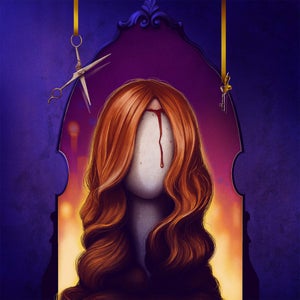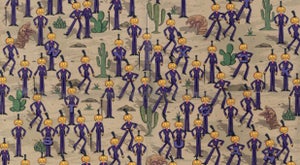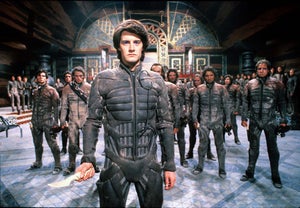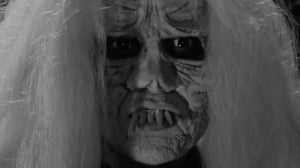
The cinema of Martin Scorsese is characterised not by a moral ambivalence, but amoral characters that disregard moral frameworks of right and wrong. His characters do not debate and disagree with the moral stance of society, instead they are driven by impulsive desires that lead them down the proverbial rabbit hole.
While the audience can be entertained by Travis Bickle’s vigilante ultra-violence in Taxi Driver (1976), or wince at the white rage of violence in the director’s gangster pictures, amongst them Goodfellas (1990) and Casino (1995), the amorality of Jordan Belfort in The Wolf of Wall Street (2013), is a different breed of discomfort.
Based on real persons and events, the film charts the downfall of a man on charges of money laundering and securities fraud. Giving us a glimpse into the consequences of avarice, we should recall the adage, “Pride comes before a fall.” It’s difficult to separate Belfort’s crimes from the economic volatility we’ve witnessed over the recent past, through the greed of the banking and financial sectors.
Alongside The Wolf of Wall Street, other films in Scorsese's canon help to offer a nuanced insight into the space between light and darkness that the director operates in.
Taxi Driver
Raised a Catholic, Scorsese has described in detail the violence he witnessed growing up – the pavements soaked with blood beneath his young feet. It’s unsurprising that his interest lies in man’s dark nature. In an almost meta turn, he explores this in front of the camera in Taxi Driver, playing one of Travis’ night fares - an angry misogynistic, racist. The scene remains one of the film’s most violent moments, overshadowing the physical violence of its crescendo, or Travis lurking at a political rally, where he plans to assassinate presidential candidate, Senator Palantine.
The director’s cameo is violent through language instead of the physical act of violence. It uses words to impress upon the audience man’s propensity for violence. Sitting opposite an apartment building, they watch a silhouette in an upper window. The unnamed passenger played by the director, standing in for the actor originally cast, explains to Travis the silhouette is his adulterous wife, but it’s not their apartment – it belongs to a black man. He explains in lurid detail how he plans to kill his wife with a .44 Magnum, and goes so as far to ask Travis if he’s seen what a .44 Magnum can do to a woman’s pussy?
It remains one of the most violent and disturbing moments in all of Scorsese’s cinema. It’s a moment of excessive amoral impulse, and even The Wolf of Wall Street, that is aptly described as a story about excess, struggles to come close to eclipsing.
The latter film takes the form of a fevered dream, or nightmare – avarice quickly corrupting the young Belfort, who realises there are ways to manipulate financial processes/practices. Similarly Travis inhabits a fever like dream of absurdity. Casino also boasts an aesthetic excess, and Cape Fear (1991) possesses a nightmarish and heightened aesthetic, and characterisation - Max Cady’s (De Niro) delusional violence, imagining himself as a lawyer before a judge, as he brutally assaults the husband and father of the family he stalks. While they all symbolise the fever like dream of Scorsese’s amoral characters, there are those films that are grounded, such as Goodfellas. However, it’s the former that’s synonymous with Scorsese, bringing an excess of style to his amoral cinematic landscape.
https://www.youtube.com/watch?v=UUxD4-dEzn0
Goodfellas
Belfort’s money laundering and fraud are not dissimilar to the manipulative operations of the mob. One of his associates is apprehended for narcotics smuggling, and he and his associates enjoy a hedonistic lifestyle, fuelled by recreational drug use. Here, there are echoes of Henry Hill, who uses, going against the rules of Paulie Cicero (Paul Sorvino), to deal but never use the merchandise.
Meanwhile, Belfort’s understanding of the securities markets has shades of Sam ‘Ace’ Rothstein’s (De Niro) skill with playing the odds, that sees him run the mob operation out in Las Vegas. The amoral Belfort is a mix of both Hill and Ace – a drugged up liability, and a master of numbers and odds.
Belfort, Hill and Ace are void of sympathy, their appeal is our interest in the criminal underworld. , while Belfort, like Hill and Ace make certain choices that morally damn their souls.
https://www.youtube.com/watch?v=xWMxvFvhAB8
The King of Comedy
Each of the aforementioned characters are blinded by their impulsive desires, and another intriguing comparison in morality forsaken, is The King of Comedy’s Rupert Pupkin. Belfort, like Pupkin before him observes no limitations in pursuing what he desires. Their crimes are different. Pupkin, an aspiring comedian plots the kidnapping of his hero Jerry Langford – the motive to appear on his show. It’s a ludicrous plot, but Scorsese’s foresight towards celebrity culture cultivated a black comedy and satirical masterpiece that may be more unsettling today than it was in 1983.
Pupkin, like Bickle, may well stir our sympathy. Unlike the others, the vigilante and aspiring, delusional comic, are misguided. It’s only fitting if there’s a sense of fate or divine intervention in the narrative arcs of these less sympathetic characters - of their worlds falling in on themselves. Or in the case of Pupkin, the suggestion that amorality will be rewarded reminds us that it might be our sense of moral order and justice collapsing in on itself – think Trump, Johnson and the rise of the Right Wing.
https://www.youtube.com/watch?v=0wVhCCo02P4
Condemnation?
Upon the release of The Wolf of Wall Street, I recall criticism directed towards Scorsese for his reluctance to condemn Belfort. But why should he actively condemn his character? The audience are able to judge for themselves, and if justified, condemn him. It seems a ludicrous criticism because Scorsese never tries to cover up the crimes and drug fuelled antics of his characters.
Scorsese’s religion is founded upon the concept of heaven and hell. One might say the filmmaker is a man torn between light and darkness, the act of contrition or redemption versus condemnation.
Scorsese often remains in the moral grey, between the better angels of men and their demons. Bickle and Belfort are intriguing contrasts in how the morally dubious man leans towards his better angels and his lesser demons. In the amoral landscape of Scorsese’s cinema, the characters manage to portray the binary opposites of Catholic faith: good and evil, paradise and hell. But these can only be found in the grey amoral shades.
https://www.youtube.com/watch?v=89KDQIZV6wI

Related Articles








